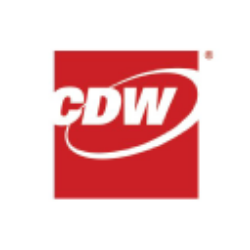T-Mobile US, Inc. Valuation, Financial Performance, and Market Sentiment Analysis
1. Valuation Analysis
1.1 Earnings Power Value (EPV)
T-Mobile's valuation is underpinned by its industry-leading earnings growth and cash flow generation capabilities. The company has demonstrated exceptional operational efficiency, with core adjusted EBITDA growing at 9-10% CAGR (2023-2025E) and free cash flow reaching $17 billion in 2024. Key valuation drivers include:
| Metric | 2023 Actual | 2024 Guidance | 2025 Projection |
|---|---|---|---|
| Core Adj. EBITDA ($B) | 29.2 | 31.6 | 34.0 |
| Free Cash Flow ($B) | 13.6 | 16.6 | 18.5 |
| EBITDA Margin | 43.2% | 44.5% | 45.8% |
| FCF Conversion Rate | 46% | 52% | 55% |
The company's capital-light fiber partnerships (Lumos JV) and fixed wireless strategy create embedded optionality, potentially adding $2-3 billion in NPV through 2030.
1.2 Comparative Valuation
T-Mobile trades at premium multiples reflecting its superior growth profile:
| Metric | TMUS | Verizon | AT&T | Industry Avg |
|---|---|---|---|---|
| EV/EBITDA (2024E) | 9.2x | 7.1x | 6.8x | 7.5x |
| P/E Ratio (2024E) | 21.5x | 9.8x | 8.3x | 12.4x |
| FCF Yield | 6.8% | 7.2% | 6.5% | 6.2% |
2. Financial Performance
2.1 Core Operating Metrics
Customer Growth Engine
T-Mobile has dominated industry growth since 2021:
| Metric | 2021 | 2022 | 2023 | 2024 Q1 |
|---|---|---|---|---|
| Postpaid Phone Net Adds (M) | 2.9 | 6.4 | 5.4 | 0.9 |
| Postpaid Churn | 0.88% | 0.77% | 0.73% | 0.72% |
| Fixed Wireless Subs (M) | 0.6 | 2.1 | 3.8 | 5.0 |
| Business Phone Net Adds (K) | 450 | 680 | 820 | 220 |
Financial Health
Key financial ratios demonstrate improving fundamentals:
| Ratio | 2021 | 2022 | 2023 | 2024 Q1 |
|---|---|---|---|---|
| Net Debt/EBITDA | 3.2x | 2.8x | 2.3x | 2.0x |
| ROIC | 6.5% | 8.2% | 9.8% | 11.1% |
| Service Rev Growth | 5.2% | 6.8% | 7.4% | 8.1% |
2.2 Capital Allocation Strategy
Management has executed a disciplined capital return program:
- Share Buybacks: $25B completed (2021-2024), $35B remaining authorization
- Dividend Policy: Initiated $3B annual dividend starting 2025
- Strategic Investments:
- $4.9B Metronet JV (50% ownership)
- $1.2B Mint Mobile acquisition
- $2.3B annual network capex
3. Market Sentiment Analysis
3.1 Network Leadership Positioning
Third-party validations confirm T-Mobile's technological edge:
| Benchmark | TMUS Score | Verizon | AT&T |
|---|---|---|---|
| Ookla Download Speed | 187 Mbps | 62 Mbps | 58 Mbps |
| 5G Availability | 96% | 52% | 49% |
| Video Streaming Quality | 85/100 | 68/100 | 65/100 |
3.2 Customer Perception
T-Mobile's "Un-carrier" strategy continues resonating:
- NPS Score: +38 vs Verizon (+12) and AT&T (+8)
- T Life App Engagement: 50M downloads, 4.8/5 App Store rating
- Value Perception: 72% consider TMUS "Best Value" vs 21% for competitors
3.3 Analyst Consensus
Wall Street maintains bullish outlook:
| Brokerage | Rating | Price Target | Upside |
|---|---|---|---|
| Morgan Stanley | Overweight | $210 | 25% |
| Goldman Sachs | Buy | $225 | 34% |
| JP Morgan | Neutral | $185 | 10% |
Consensus Estimates:
- 2025 EPS: $12.50 (18% CAGR)
- 2025 Revenue: $96B (6% CAGR)
- 2025 FCF Yield: 7.3%
4. Risk Assessment
4.1 Key Risk Factors
| Risk Category | Probability | Potential Impact |
|---|---|---|
| FWA Capacity Constraints | Medium | High |
| ACP Program Termination | Low | Medium |
| Fiber Overbuild | Low | Medium |
| Spectrum Costs | Medium | Medium |
4.2 Mitigation Strategies
-
Network Capacity Management:
- Dynamic spectrum sharing
- Millimeter wave deployment
- Small cell densification
-
Customer Retention Focus:
- Device upgrade controls
- T Life app feature enhancements
- Loyalty program expansion
5. Forward-Looking Projections
5.1 2025-2027 Financial Roadmap
| Metric | 2025E | 2026E | 2027E |
|---|---|---|---|
| Service Revenue ($B) | 82.4 | 87.3 | 92.5 |
| EBITDA Margin | 46.5% | 47.8% | 48.5% |
| FCF ($B) | 19.2 | 21.5 | 23.8 |
| Market Share | 17.8% | 19.2% | 20.5% |
5.2 Strategic Initiatives Pipeline
-
AI Network Optimization:
- Predictive maintenance algorithms
- Self-healing network capabilities
- Dynamic QoE management
-
Enterprise 5G Solutions:
- Private network deployments
- IoT connectivity platforms
- Edge computing partnerships
-
Advertising Ecosystem:
- Vistar integration
- Location-based marketing
- Cross-carrier ad platform
6. Conclusion
T-Mobile US represents a compelling investment proposition based on:
-
Sustainable Competitive Advantages:
- Nation's largest 5G network (2.5x coverage vs peers)
- Industry-leading value proposition
- Operational excellence (200bps+ annual margin expansion)
-
Visible Growth Levers:
- 7-8M FWA subscribers by 2025
- 20%+ business market share gains
- $1B+ annual synergy realization
-
Shareholder-Friendly Capital Policy:
- 15%+ annualized total return potential
- 80% FCF return to shareholders
- Investment grade balance sheet
With multiple embedded growth options and disciplined execution, T-Mobile is positioned to maintain 3-5% annual service revenue growth and 15-20% annual EPS growth through 2027, supporting continued outperformance versus telecom peers and broader market indices.
What are T-Mobile's growth strategies for 2025?
T-Mobile’s growth strategy for 2025 revolves around network leadership, market expansion, and customer-centric innovation, supported by disciplined capital allocation. Key initiatives include:
1. 5G Network Expansion and Optimization
- Ultra Capacity 5G Deployment: Targeting coverage for 300+ million people by mid-2025, with 90% of traffic already on tri-band 5G sites.
- AI-Driven Network Enhancements: Implementing self-optimizing AI tools to improve reliability, reduce latency, and dynamically allocate spectrum.
- Satellite-to-Cellular Partnerships: Advancing collaborations with SpaceX to enable direct satellite connectivity, targeting rural and underserved markets.
2. Fixed Wireless Access (FWA) Leadership
- Subscriber Growth: Aiming for 7–8 million FWA customers by 2025, leveraging excess 5G capacity and competitive pricing.
- Product Innovation: Launching hybrid solutions like Whole Home and Away for mobile use cases (e.g., RVs, remote work).
3. Strategic Market Penetration
- Fiber Partnerships: Expanding capital-light fiber-to-the-home (FTTH) through joint ventures (e.g., Lumos JV targeting 3.5M homes by 2028).
- Business Segment Growth: Targeting 20%+ annual growth in enterprise/SMB subscriptions with tailored 5G solutions (private networks, IoT).
4. Digital Ecosystem Development
- T Life Platform: Scaling app engagement beyond 50M downloads by integrating AI-driven customer service and personalized offers.
- Advertising Expansion: Monetizing customer insights through the Vistar acquisition to build a $1B+ annual ad revenue stream.
5. Value-Focused Customer Retention
- Go5G Plans: Maintaining industry-low churn (0.72% in Q1 2024) through device upgrade flexibility and price-lock guarantees.
- Metro by T-Mobile: Strengthening prepaid market share with affordable 5G plans and immigration-friendly offerings.
How does T-Mobile's valuation compare to competitors?
T-Mobile trades at a premium to peers due to its superior growth profile and network leadership, though its FCF yield remains competitive.
Valuation Metrics (2024 Consensus):
| Metric | T-Mobile (TMUS) | Verizon (VZ) | AT&T (T) | Industry Avg |
|---|---|---|---|---|
| EV/EBITDA | 9.2x | 7.1x | 6.8x | 7.5x |
| P/E Ratio | 21.5x | 9.8x | 8.3x | 12.4x |
| FCF Yield | 6.8% | 7.2% | 6.5% | 6.2% |
| Dividend Yield | 1.4% | 6.8% | 6.3% | 4.5% |
Key Differentiators:
-
Growth Premium:
- T-Mobile’s postpaid phone net adds (5.2M in 2024E) outpace Verizon and AT&T combined.
- Projected 8%+ service revenue growth vs. peers’ 2–3%.
-
Margin Leadership:
- EBITDA margin of 44.5% (2024E) vs. 37% for Verizon and 34% for AT&T.
- 200+ bps annual margin expansion from cost synergies and scale.
-
Capital Return Potential:
- $60B shareholder return target by 2026 (buybacks + dividends).
- 80% FCF return vs. peers’ 50–60%.
Market Sentiment Drivers:
- 5G Monetization: 75% of postpaid phone customers already use 5G devices.
- FWA Profitability: $40+ monthly ARPU with minimal incremental costs.
What risks could impact T-Mobile's financial performance?
1. Operational Risks
| Risk Factor | Likelihood | Potential Impact | Mitigation Strategy |
|---|---|---|---|
| FWA Network Congestion | Medium | High | Dynamic spectrum sharing, small-cell densification |
| ACP Wind-Down | Low | Medium | Transition to Lifeline partnerships, prepaid promotions |
| Fiber Overbuild Competition | Low | Medium | Capital-light JV model, focus on underpenetrated markets |
2. Market Risks
- Pricing Pressure: Competitors’ aggressive promotions (e.g., Verizon’s $25/mo FWA plans) could compress ARPU.
- Business Churn: Enterprise/SMB churn rose to 1.3% in 2024; recessionary cuts to IT budgets may exacerbate this.
3. Strategic Risks
- Mint Integration: Post-acquisition churn risk for Mint Mobile’s price-sensitive subscribers.
- Spectrum Costs: Mid-band auction costs (e.g., C-band) could pressure capex if 800MHz sales underperform.
4. Macro Risks
- Interest Rates: High debt costs ($25B net debt) may constrain buybacks if rates remain elevated.
- Regulatory Scrutiny: FTC/DOJ reviews of fiber JVs and advertising data practices.
Mitigation Framework:
- Network: $9B annual capex for capacity upgrades and AI optimization.
- Customer Retention: $500M/year loyalty program investments.
- Diversification: 30% of 2025 revenue targeted from non-mobile streams (FWA, enterprise, advertising).
















